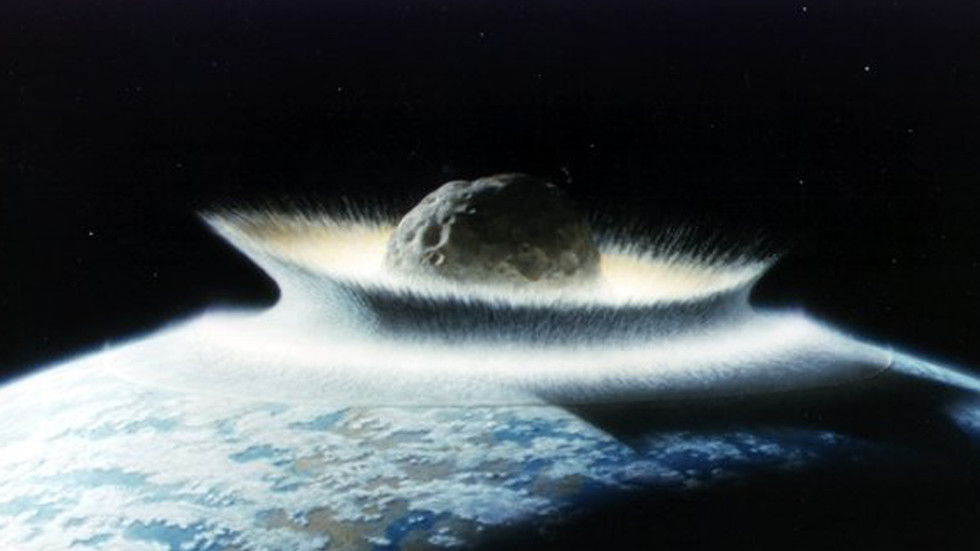
It’s a scenario straight out of a Hollywood blockbuster, an asteroid is careening towards Earth and is set to wipe out human existence. To mark Asteroid Day, here are four space rocks on a collision course with our planet.
The United Nations fears that the possibility of an asteroid smashing into a densely populated area isn’t being taken seriously enough, so it designated June 30 as International Asteroid Day to raise awareness about the potentially catastrophic occurrence.
The date was chosen because the largest asteroid impact in recorded history took place over Tunguska, Russia on that day in 1908 when an enormous asteroid exploded and destroyed hundreds of acres of forest.
To mark the event, here are four asteroids that could wallop into Earth.
1979 XB
With its 900-meter diameter, if this enormous rock hits our planet the impact would be devastating. It’s currently hurtling through the solar system at nearly 70,000kph and is getting almost 30km closer to Earth every second.
The European Space Agency (ESA) has put it in second place on its ‘Risk List’ for Near-Earth Asteroids. The orbit of this minor planet is unreliable but it’s predicted to have a chance of hitting Earth midway through this century.
Experts warn that 1979 XB could suddenly come a lot closer to Earth, given only a tiny variation in its orbit. Its next predicted approach of Earth is set to come in 2024.
Apophis
Roughly the size of four football fields, Apophis is in very close orbit to Earth. It’s currently more than 200 million kilometers away but gets half a kilometer closer every second.
It regularly passes Earth on its orbit but the latest radar and optical data suggests we’re in for a close shave when it blazes past our planet at a distance of just 30,000km in 2029. This is less than a tenth of the distance to the Moon.
It will next fly by Earth in mid-October this year when it will pass us at a safe distance of around 30 million kilometers. If Apophis did blast into Earth the impact is calculated to be similar to about 15,000 nuclear weapons detonating at once.
2010 RF12
This asteroid holds the dubious honor of topping both the Sentry List (Earth Impact Monitoring system) and the ESA impact risk list. It’s currently around 215 million kilometers from Earth and is traveling at a speed of 117,935kph.
The danger from this asteroid isn’t forecast to come until the end of the century when it’s calculated to come as much as 40 times closer than the Moon. Luckily it weighs, a relatively small, 500 tons and is about seven meters in diameter. The impact is forecast to be slightly less than the meteor that hit the Russian city of Chelyabinsk in 2013, which damaged thousands of buildings and injured hundreds of people.
2010 RF12 is set to pass Earth on August 13, 2022 when astronomers around the world will train their telescopes on the object to learn as much as possible about it and its trajectory.
2000 SG344
2000 SG344 is part of a group called the Aten Asteroids, which have orbits aligned very closely with Earth’s. It is predicted to have a chance of impact in the next three or four decades. With just a 50-meter diameter, it’s relatively small but is still twice as big as the Chelyabinsk meteor which caused so much damage six years ago.
It’s currently traveling through space at more than 112,000kph and is getting 1.3km closer to Earth every second. Interestingly, it travels around the Sun in almost the exact same time as Earth, 353 days versus Earth’s 365 days. This gives astronomers regular chances to observe the asteroid and assess the risk it poses.
Undetected asteroids
Of course, a big part of the danger with hazardous space objects is that we are not good at detecting them and some of the most dangerous ones have caught us by surprise. When the Chelyabinsk meteor entered Earth’s atmosphere undetected, its explosion released up to 30 times more energy than the atomic bombs the US dropped on Japan in 1945.
As recently as last December, another asteroid broke apart over the Bering Sea that was 10 times more powerful than the bombs dropped on Hiroshima and Nagasaki. Neither Near Earth Objects (NEOs) were tracked in advance. It’s hoped that International Asteroid Day will prompt authorities around the world to improve how they detect the potentially cataclysmic space rocks.
Like this story? Share it with a friend!
https://www.rt.com/news/463071-asteroids-collision-course-earth/
2019-06-30 17:10:00Z
52780323126558
Tidak ada komentar:
Posting Komentar